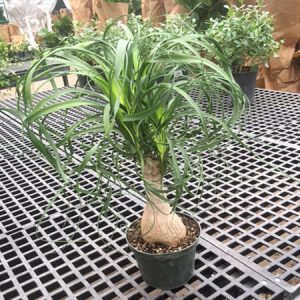Description
Tradescantia – Rhoeo – Setcreasea – Zebrina – Spiderwort
There are about 71 creeping, trailing, or tuft forming, fibrous or tuberous rooted, evergreen perennial, in the Commelinaceae family, in this genus. They naturally occur in woodlands, scrub, or disturbed ground from Canada south to Northern Argentina. The leaves are alternate, usually fleshy, blade like to lanceolate shaped, often purple flushed or variegated, and hairy or hairless. Short live, spreading, usually saucer shaped flowers, each 3 petals and 3 sepals and 6 yellow anthers are produced in terminal or axillary cymes, which are fused in pairs, with paired, boat shaped bracts, in late summer. The flowers are white, pink or purple but most commonly bright blue some of which open in late morning and close by night. Hardy Tradescantias are suitable for a mixed or herbaceous border. Contact with the foliage may irritate skin.
Grow in moist, fertile soli in full sun or partially shade. After flowering, cut back flowered stems to prevent seeding and to encourage further flowers or cut back ruthlessly when they become straggly to encourage bushiness. Divide in autumn or spring.
Prone to viruses, aphids, and spider mites.
T. Andersoniana Group – T. x andersoniana – These tufted, clump forming perennials grow 16-24″ tall and 18-24″ wide. From erect branching stems and arching, strap shaped, pointed, hairless, slightly fleshy, mid green, often purple tinted leaves, to 15″ long. Blue, purple, rose-pink to rose-red, or white flowers, up to 1 ½” across, each have 3 wide open, triangular petals and fluffy hairy stamen hairs, they are borne in succession in paired, terminal cymes from early summer to early autumn.
‘Osprey’ – Produces white flowers with blue stamen filaments
Zone 5-9





